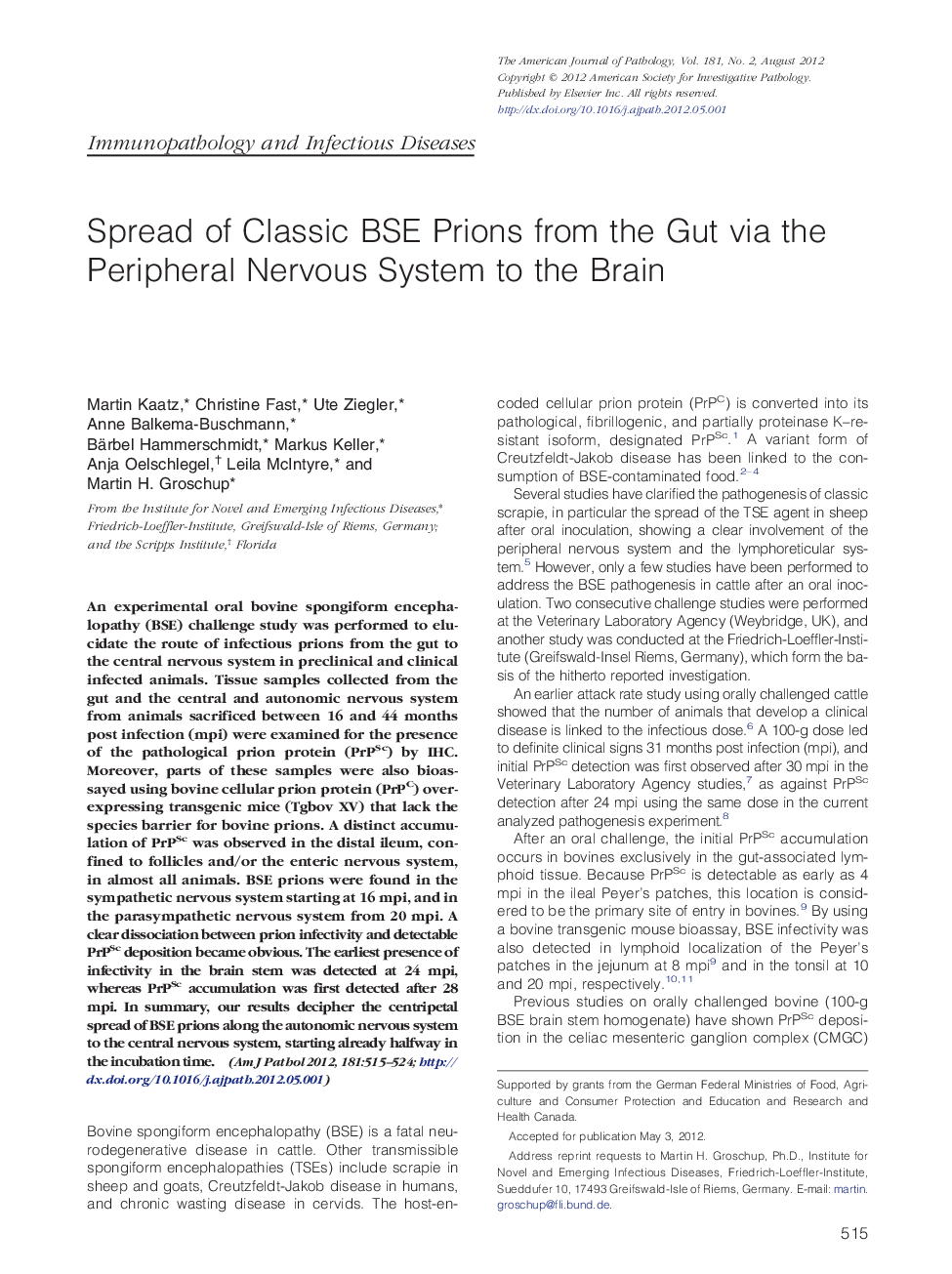| Article ID | Journal | Published Year | Pages | File Type |
|---|---|---|---|---|
| 5933410 | The American Journal of Pathology | 2012 | 10 Pages |
Abstract
An experimental oral bovine spongiform encephalopathy (BSE) challenge study was performed to elucidate the route of infectious prions from the gut to the central nervous system in preclinical and clinical infected animals. Tissue samples collected from the gut and the central and autonomic nervous system from animals sacrificed between 16 and 44 months post infection (mpi) were examined for the presence of the pathological prion protein (PrPSc) by IHC. Moreover, parts of these samples were also bioassayed using bovine cellular prion protein (PrPC) overexpressing transgenic mice (Tgbov XV) that lack the species barrier for bovine prions. A distinct accumulation of PrPSc was observed in the distal ileum, confined to follicles and/or the enteric nervous system, in almost all animals. BSE prions were found in the sympathetic nervous system starting at 16 mpi, and in the parasympathetic nervous system from 20 mpi. A clear dissociation between prion infectivity and detectable PrPSc deposition became obvious. The earliest presence of infectivity in the brain stem was detected at 24 mpi, whereas PrPSc accumulation was first detected after 28 mpi. In summary, our results decipher the centripetal spread of BSE prions along the autonomic nervous system to the central nervous system, starting already halfway in the incubation time.
Related Topics
Health Sciences
Medicine and Dentistry
Cardiology and Cardiovascular Medicine
Authors
Martin Kaatz, Christine Fast, Ute Ziegler, Anne Balkema-Buschmann, Bärbel Hammerschmidt, Markus Keller, Anja Oelschlegel, Leila McIntyre, Martin H. Groschup,
